I have a world that is rendered in 2D and I'm looking at it from the top. Tjat looks like this (the floor tiles have no texture and only random green color yet):

Before rendering my entities, I transform the model-view matrix like this (while position is the position and zoom the zoom of the camera, ROTATION is 45):
glScalef(this.zoom, this.zoom, 1);
glTranslatef(this.position.x, this.position.y, 0);
glRotatef(ROTATION, 0, 0, 1);
Now I want to calculate the world coordinates for the current position of my camera. What I'm trying is to create a new matrix with glPushMatrix, then transform it the same way that the camera is transformed, and then get the matrix and multiply the given camera coordinate with it:
private Vector2f toWorldCoordinates(Vector2f position) {
glPushMatrix();
// do the same as when rendering
glScalef(this.zoom, this.zoom, 1);
glTranslatef(this.position.x, this.position.y, 0);
glRotatef(ROTATION, 0, 0, 1);
// get the model-view matrix
ByteBuffer m = ByteBuffer.allocateDirect(64);
m.order(ByteOrder.nativeOrder());
glGetFloatv(GL_MODELVIEW_MATRIX, m);
// calculate transformed position
float x = (position.x * m.getFloat(0)) + (position.y * m.getFloat(4)) + m.getFloat(12);
float y = (position.x * m.getFloat(1)) + (position.y * m.getFloat(5)) + m.getFloat(13);
System.out.println(x + "/" + y);
glPopMatrix();
return new Vector2f(x, y);
}
The problem now is: this works for the x coordinate, but the y coordinate is wrong and always 0. Have I misused the matrix somehow? Is there a "smoother" way of getting the world coordinates from the eye coordinates?